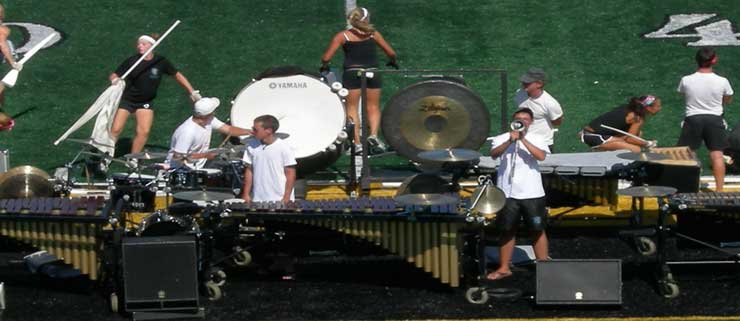.jpg) The guitar’s soft melodic tone made it difficult for people to hear it when being played alongside other instruments. So during the 1930’s an inventive individual decided to change that and invented the first electric guitar. Little did he know, or have imagined way back then how the invention of the electric guitar would significantly affect the course of 20th century music.
The guitar’s soft melodic tone made it difficult for people to hear it when being played alongside other instruments. So during the 1930’s an inventive individual decided to change that and invented the first electric guitar. Little did he know, or have imagined way back then how the invention of the electric guitar would significantly affect the course of 20th century music.
{mosimage}In The Beginning
The guitar’s soft melodic tone made it difficult for people to hear it when being played alongside other instruments. So during the 1930’s an inventive individual decided to change that and invented the first electric guitar. Little did he know, or have imagined way back then how the invention of the electric guitar would significantly affect the course of 20th century music.
Like most new things, the electric guitar had its critics but it quickly won people over because of its ability to allow musicians to play much more creatively and express their own individual styles.
The First Pickup
In 1924 an inventive engineer working for the Gibson guitar company named Lloyd Loar, designed the first magnetic pickup. Using a magnet, he converted guitar string vibrations into electrical signals, which then were amplified through a speaker system. This first pickup was crude, but it was a great beginning.
The First Electric Guitar
In 1931 the Electro String Company was founded by Paul Barth, George Beauchamp and Adolph Rickenbacker, and developed the first electric guitars marketed to the general public. They made their guitars from cast aluminum and were played on a person’s lap using a steel slide much like today's steel guitar. Because of their unusual material, they were affectionately called “Frying Pans.”
The early success of the frying pans prompted the Gibson guitar company to build their first electric guitar, the ES-150 which is a legend today.
The First Solid-Body Electric Guitar
Electric guitars were quickly becoming popular, even though there was a major problem with their construction. Their bodies would vibrate due to the amplified sounds coming through the speakers they were played into, causing what we know as feed-back. The obvious remedy was to build a guitar made with a solid body which wouldn’t vibrate so easily.
As with most innovations, there is controversy over who invented the first solid –body electric guitar. Guitar legend Les Paul in the 1940’s developed his affectionately called “The Log” solid-body guitar by attaching a Gibson neck to a solid piece of wood…a railroad tie, hence the name “Log.”
Around this same time, guitarist Merle Travis and engineer Paul Bigsby developed a solid-body electric guitar that resembled the solid-body guitars that we’re so familiar with today.
The First Mass Produced Electric Guitar
Leo Fender in 1950 was the first to mass produce an electric guitar which was originally called the Fender Broadcaster. This guitar was quickly re-named to the infamous Telecaster because the name “Broadcaster” was already being used by another company. Leo followed this up in 1954 with the most renowned guitar of all time…the Stratocaster.
Leo’s success led other guitar manufacturers into developing their own mass-produced electric guitars. Most notable was the teaming-up of the Gibson guitar company with Les Paul to create the famous Gibson Les Paul electric guitar.
More Affordable Electric Guitars
During the 1960’s and 1970’s famous brand name electric guitars were too expensive for the average person to buy. Less pricey imitations quickly came to market but they were sub-standard in sound and playability. The Japanese, in the 1980’s started manufacturing electric guitars of similar quality to the more expensive American made models, but with much more affordable pricing. This prompted Fender and other leading guitar manufacturers into producing less expensive versions of their classic models. This resulted in electric guitars now being more affordable and accessible to more people.
Today, the Gibson and Fender guitar companies are still producing some of the most well-known and best made electric guitars on the market. But it’s getting crowded with other high quality brands such as BC Rich, ESP and Peavey. Innovative designs, shapes and materials are being incorporated with new technologies to produce better sounding electric guitars.
Modern guitars have built-in software allowing them to sound like other types of guitars. Some are even fitted with pickups that synthesize the sound of different instruments or record the notes in musical notation.
The electric guitar has come a long way with an interesting and inventive past and many in the industry say it has an even brighter future.
About The Author
Bob Martin
See what your local retail electric guitar shop doesn’t want you to know http://www.electricguitarsource.com







 Scroll down to view the comparison chart of over a dozen different portable digital audio recorders.
Scroll down to view the comparison chart of over a dozen different portable digital audio recorders.